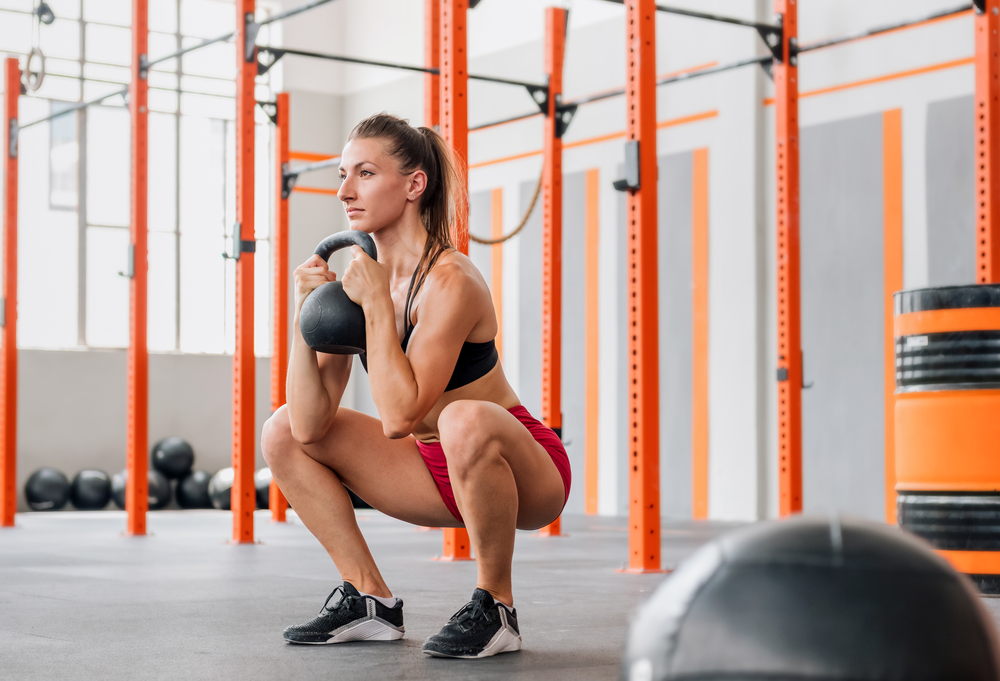Whether you’re just starting out or you’ve been hitting the gym for years, squats are a foundational exercise that can transform your workout routine. But why are squats so important? Think of them as the Swiss Army knife of exercises—they hit multiple muscle groups, improve mobility, and boost overall strength. So, let’s dive into the wonderful world of squat and explore the different variations you can incorporate into your workouts.

Basic Squat Variations
Bodyweight Squat: The Foundation
Bodyweight squats are like the plain white T-shirt of fitness—simple but effective. Perfect for beginners, they help build muscle endurance and improve flexibility.
How to Perform a Bodyweight Squat
- Stand tall: Start with your feet shoulder-width apart.
- Lower down: Push your hips back and bend your knees as if you’re sitting into a chair.
- Stay aligned: Keep your chest up, back straight, and knees over your toes.
- Rise up: Return to the standing position.
Bodyweight squats are fantastic for warming up or as part of a high-rep workout.
Goblet Squat: Adding a Little Weight
The goblet squat is the next step up. Holding a dumbbell or kettlebell close to your chest, you get the added benefit of engaging your upper body.
How to Perform a Goblet Squat
- Grab your weight: Hold a dumbbell or kettlebell close to your chest with both hands.
- Squat down: Lower your body into a squat while keeping the weight in place.
- Maintain form: Ensure your back remains straight and your core engaged.
- Stand tall: Push through your heels to return to standing.
Front Squat: Challenging Your Core
The front squat is a fantastic way to target your quadriceps and core muscles. Using a barbell placed in front of your shoulders, this variation requires balance and strength.
How to Perform a Front Squat
- Set the barbell: Position the barbell on the front of your shoulders, crossing your arms to hold it in place.
- Lower yourself: Squat down, keeping your elbows high and chest up.
- Push up: Drive through your heels to stand back up, maintaining a strong core.
Back Squat: The Classic
The back squat is a staple in any strength training program. By placing a barbell on your upper back, you engage your entire lower body and core.
How to Perform a Back Squat
- Position the barbell: Place the barbell across your upper back, gripping it slightly wider than shoulder-width.
- Descend: Squat down, keeping your chest up and back straight.
- Ascend: Push through your heels to return to the standing position.
How to Do Proper Squats
Warm-Up and Stretching: The Pre-Squat Ritual
Warming up is crucial to avoid injuries and get the most out of your squats. Think of it as the pre-game hype session for your muscles.
Recommended Warm-Up Exercises
- Dynamic stretches: Leg swings, hip circles, and lunges.
- Light cardio: A few minutes of jogging or jumping jacks to get the blood flowing.
Proper Squat Technique: The Do’s and Don’ts
Executing the perfect squat is an art form. Here’s how to nail it every time.
Foot Placement
- Stand firm: Your feet should be shoulder-width apart.
Knee Alignment
- Keep it straight: Ensure your knees are in line with your toes throughout the movement.
Hip Movement
- Push back: Move your hips back and down as if sitting into a chair.
Back Position
- Stay neutral: Maintain a neutral spine with your chest up.
Breathing
- Inhale and exhale: Inhale as you lower, exhale as you rise.
Common Mistakes and How to Avoid Them
Knees Caving In
- Focus on form: Keep your knees tracking over your toes.
Heels Lifting Off the Ground
- Distribute weight: Ensure your weight is evenly spread across your feet.
Forward Lean
- Chest up: Engage your core and keep your chest lifted.
Squat Depth
- Go low: Aim to squat until your thighs are parallel to the ground or lower.
Advanced Squat Variations

Overhead Squat: A True Test of Mobility
The overhead squat is a beast that challenges your shoulder stability and core strength.
How to Perform an Overhead Squat
- Hold it high: Grip a barbell with a wide grip and hold it overhead.
- Squat down: Lower into a squat while maintaining the bar in place overhead.
- Stand strong: Push up through your heels, keeping the core tight.
Bulgarian Split Squat: The Balance Booster
The Bulgarian split squat is excellent for targeting the quads and glutes while improving balance.
How to Perform a Bulgarian Split Squat
- Set up: Place one foot behind you on an elevated surface.
- Lower down: Squat with the front leg, keeping the chest up.
- Rise up: Push through the front heel to return to standing.
Sumo Squat: Inner Thigh Target
The sumo squat focuses on the inner thighs and glutes with a wider stance.
How to Perform a Sumo Squat
- Wide stance: Stand with feet wider than shoulder-width apart, toes pointed out.
- Lower yourself: Squat down, ensuring knees track over toes.
- Push up: Stand up while keeping the torso upright.
Box Squat: Perfecting Depth
The box squat is great for learning proper squat depth and form.
How to Perform a Box Squat
- Set a box: Position a box behind you.
- Squat down: Lower until you sit briefly on the box.
- Stand up: Push through your heels to rise without rocking forward.
Conclusion: Squat Variations—Your New Best Friend
In the fitness world, squats are versatile, reliable, and they never get old. Incorporating different squat variations into your routine can help you build strength, improve mobility, and enhance overall fitness. Remember, consistency and progression are key. Keep squatting, and soon you’ll see the incredible benefits of this powerhouse exercise.
We recommend that you read The Truth About Somatic Exercise for Weight Loss & Unveiling the Impacts of Social Media on Mental Health
